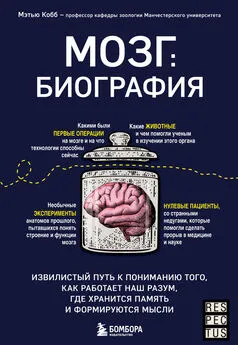Барбара Тверски - Ум в движении [Как действие формирует мысль] [litres]
- Название:Ум в движении [Как действие формирует мысль] [litres]
- Автор:
- Жанр:
- Издательство:Литагент Альпина
- Год:2020
- Город:Москва
- ISBN:978-5-0013-9354-2
- Рейтинг:
- Избранное:Добавить в избранное
-
Отзывы:
-
Ваша оценка:
Барбара Тверски - Ум в движении [Как действие формирует мысль] [litres] краткое содержание
Книга известного когнитивного психолога Барбары Тверски посвящена пространственному мышлению. Это мышление включает в себя конструирование «в голове» и работу с образами в отношении не только физического пространства, но и других его видов – пространств социального взаимодействия и коммуникации, жестов, речи, рисунков, схем и карт, абстрактных построений и бесконечного поля креативности. Ключевая идея книги как раз и состоит в том, что пространственное мышление является базовым, оно лежит в основе всех сфер нашей деятельности и всех ситуаций, в которые мы вовлекаемся.
Доступное и насыщенное юмором изложение серьезного, для многих абсолютно нового материала, а также прекрасные иллюстрации привлекут внимание самых взыскательных читателей. Они найдут в книге как увлекательную конкретную информацию о работе и развитии пространственного мышления, так и важные обобщения высокого уровня, воплощенные в девять законов когниции.
Ум в движении [Как действие формирует мысль] [litres] - читать онлайн бесплатно ознакомительный отрывок
Интервал:
Закладка:
Карты созвездий в древних пещерах
Rappenglück, M. (1997). The Pleiades in the “Salle des Taureaux,” grotte de Lascaux. Does a rock picture in the cave of Lascaux show the open star cluster of the Pleiades at the Magdalénien era (ca 15.300 BC)? In C. Jaschek & F. Atrio Barendela (Eds.), Proceedings of the IVth SEAC Meeting “Astronomy and Culture” (pp. 217–225). Salamanca, Spain: University of Salamanca.
Wikipedia. (n. d.). Star chart. Взято с сайта https://en.wikipedia.org/wiki/Star_chart.
Самодельные карты американских индейцев
Finney, B. (1998). Nautical cartography and traditional navigation in Oceania. In D. Woodward & G. M. Lewis (Eds.), The history of cartography. Vol. 2, Book Three: Cartography in the traditional African, American, Arctic, Australian, and Pacific societies (pp. 443–492). Chicago, IL: University of Chicago Press.
Lewis, G. M. (1998). Maps, mapmaking, and map use by native North Americans. In D. Woodward & G. M. Lewis (Eds.), The history of cartography. Vol. 2, Book Three: Cartography in the traditional African, American, Arctic, Australian, and Pacific societies (pp. 51–182). Chicago, IL: University of Chicago Press.
Smethurst, G. (1905). A narrative of an extraordinary escape out of the hands of the Indians, in the gulph of St. Lawrence . Edited by W. F. Ganong. White-fish, MT: Kessinger Publishing. (Первое издание опубликовано в Лондоне в 1774 г.).
Красочные карты в кодексах ацтеков
Boone, E. H. (2010). Stories in red and black: Pictorial histories of the Aztecs and Mixtecs . Austin: University of Texas Press.
Синтаксис и семантика карт-схем
Denis, M. (1997). The description of routes: A cognitive approach to the production of spatial discourse. Cahiers de Psychologie , 16, 409–458.
Tversky, B., & Lee, P. U. (1998). How space structures language. In C. Freksa, W. Brauer, C. Habel, & K. F. Wender (Eds.), Spatial cognition III [Lecture Notes in Computer Science] (Vol. 1404, pp. 157–175). Berlin, Germany: Springer, Berlin, Heidelberg.
Tversky, B., & Lee, P. U. (1999). Pictorial and verbal tools for conveying routes. In International Conference on Spatial Information Theory (pp. 51–64). Berlin, Germany: Springer, Berlin, Heidelberg.
Эмпирический поиск когнитивных принципов разработки карт
Agrawala, M., & Stolte, C. (2001, August). Rendering effective route maps: Improving usability through generalization. Proceedings of the 28th Annual Conference on Computer Graphics and Interactive Techniques , 241–249.
Tversky, B., Agrawala, M., Heiser, J., Lee, P., Hanrahan, P., Phan, D., Daniel, M.-P. (2006). Cognitive design principles for automated generation of visualizations. In G. L. Allen (Ed.), Applied spatial cognition: From research to cognitive technology (pp. 53–75). New York, NY: Psychology Press.
«Три П» (производство, предпочтение, производительность) при создании дизайна
Kessell, A., & Tversky, B. (2011). Visualizing space, time, and agents: Production, performance, and preference. Cognitive Processing , 12(1), 43–52.
Интерпретация кости Ишанго
Pletser, V., & Huylebrouck, D. (1999). The Ishango artefact: The missing base 12 link. Forma-Tokyo , 14(4), 339–346.
Pletser, V., & Huylebrouck, D. (2008, January). An interpretation of the Ishango rods. In Proceedings of the Conference Ishango, 22000 and 50 Years Later: The Cradle of Mathematics (pp. 139–170). Brussels, Belgium: Royal Flemish Academy of Belgium, KVAB.
Развитие понимания количества
Gelman, R., & Gallistel, C. R. (1986). The child’s understanding of number . Cambridge, MA: Harvard University Press.
Формальные системы обозначений – это схемы
Landy, D., & Goldstone, R. L. (2007). Formal notations are diagrams: Evidence from a production task. Memory & Cognition , 35(8), 2033–2040.
Люди используют пространство для решения математических задач; доказательства – это истории
Landy, D., & Goldstone, R. L. (2007). How abstract is symbolic thought? Journal of Experimental Psychology: Learning, Memory, and Cognition , 33(4), 720.
Восточная окружающая среда сложнее западной в глазах представителей как восточной, так и западной культур
Miyamoto, Y., Nisbett, R. E., & Masuda, T. (2006). Culture and the physical environment: Holistic versus analytic perceptual affordances. Psychological Science , 17(2), 113–119.
Китайские арифметические схемы оцениваются как более сложные по сравнению с американскими
Wang, E. (2011). Culture and math visualization: Comparing American and Chinese math images. (Unpublished master’s thesis). Columbia Teachers College, New York, NY.
Zheng, F, (2015). Math visualizations across cultures: Comparing Chinese and American math images . (Unpublished master’s thesis). Columbia Teachers College, New York, NY.
Измерения и вычисления могут устранить некоторые искажения и ошибки
Kahneman, D., & Tversky, A. (2013). Choices, values, and frames. In W. Ziemba & L. C. MacLean (Eds.), Handbook of the fundamentals of financial decision making: Part I (pp. 269–278). Hackensack, NJ: World Scientific Publishing Co.
Tversky, A., & Kahneman, D. (1974). Judgment under uncertainty: Heuristics and biases. Science , 185(4157), 1124–1131.
Tversky, A., & Kahneman, D. (1981). The framing of decisions and the psychology of choice. Science , 211(4481), 453–458.
Tversky, A., & Kahneman, D. (1983). Extensional versus intuitive reasoning: The conjunction fallacy in probability judgment. Psychological Review , 90(4), 293.
В геометрии древних слова служили лишь примечаниями к схемам, а не наоборот
Netz, R. (2003). The shaping of deduction in Greek mathematics: A study in cognitive history (Vol. 51). Cambridge, England: Cambridge University Press.
Пространственные мысленные модели
Johnson-Laird, P. N. (1980). Mental models in cognitive science. Cognitive Science , 4(1), 71–115.
Tversky, B. (1991). Spatial mental models. Psychology of Learning and Motivation , 27, 109–145. https://doi.org/10.1016/S0079–7421(08)60122-X.
Диаграммы Эйлера и рассуждения
Chapman, P., Stapleton, G., Rodgers, P., Micallef, L., & Blake, A. (2014). Visualizing sets: An empirical comparison of diagram types. In T. Dwyer, H. Purchase, & A. Delaney (Eds.), Diagrammatic representation and inference. Diagrams 2014, Lecture Notes in Computer Science (Vol. 8578, pp. 146–160). Berlin, German: Springer, Berlin, Heidelberg.
Sato, Y., Mineshima, K., & Takemura, R. (2010). The efficacy of Euler and Venn diagrams in deductive reasoning: Empirical findings. In A. K. Goel, M. Jamnik, & N. H. Narayanan (Eds.), Diagrammatic representation and inference: 6th International Conference, Diagrams 2010, Portland, OR, USA, August 9–11, 2010, Proceedings (pp. 6–22). Berlin, Germany: Springer-Verlag Berlin Heidelberg. doi:10.1007/978–3–642–14600–8.
Построение силлогизма с использованием диаграмм
Barwise, J., & Etchemendy, J. (1994). Hyperproof: For Macintosh . Center for the Study of Language and Inf.
Giardino, V. (2017). Diagrammatic reasoning in mathematics. In L. Magnani & T. Bertolotti (Eds.), Springer handbook of model-based science (pp. 499–522). New York, NY: Springer.
Green, T. R. G., & Petre, M. (1996). Usability analysis of visual programming environments: A “cognitive dimensions” framework. Journal of Visual Languages & Computing , 7(2), 131–174.
Shin, S. J. (1994). The logical status of diagrams . Cambridge, England: Cambridge University Press.
Stenning, K., & Lemon, O. (2001). Aligning logical and psychological perspectives on diagrammatic reasoning. Artificial Intelligence Review , 15(1–2), 29–62.
Wexler, M. (1993). Matrix models on large graphs. Nuclear Physics , B410, 377–394.
Запись музыки
Wikipedia. (n. d.). Musical notation. Взято с сайта https://en.wikipedia.org/wiki/Musical_notation.
Запись танца
Encyclopaedia Britannica. (n. d.). Dance notation. Взято с сайта https://www.britannica.com/art/dance-notation.
История приспособлений для определения времени
Bruxton, E. (1979). The history of clocks and watches . New York, NY: Crescent.
Древнекитайские календари
Calendars Through the Ages. (n. d.). The Chinese calendar. Взято с сайта http://www.webexhibits.org/calendars/calendar-chinese.html.
Петроглифическая запись о сверхновой
Sule, A., Bandey, A., Vahia, M., Iqbal, N., & Tabasum, M. (2011). Indian record for Kepler’s supernova: Evidence from Kashmir Valley. Astronomische Nachrichten , 332(6), 655–657.
Изображение событий в античном искусстве
Small, J. P. (1999). Time in space: Narrative in classical art. Art Bulletin , 81(4), 562–575.
Small, J. P. (2003). Wax tablets of the mind: Cognitive studies of memory and literacy in classical antiquity . New York, NY: Routledge.
Восприятие и познание событий
Daniel, M. P., & Tversky, B. (2012). How to put things together. Cognitive Processing , 13(4), 303–319.
Hard, B. M., Recchia, G., & Tversky, B. (2011). The shape of action. Journal of Experimental Psychology: General , 140(4), 586.
Tversky, B., & Zacks, J. M. (2013). Event perception. In D. Riesberg (Ed.), Oxford handbook of cognitive psychology (pp. 83–94). Oxford, England: Oxford University Press.
Zacks, J. M., & Radvansky, G. A. (2014). Event cognition . Oxford, England: Oxford University Press.
Zacks, J. M., & Swallow, K. M. (2007). Event segmentation. Current Directions in Psychological Science , 16(2), 80–84.
Zacks, J. M., & Tversky, B. (2001). Event structure in perception and conception. Psychological Bulletin , 127(1), 3.
Эмпирически найденные принципы когнитивного дизайна для последовательности действий
Agrawala, M., Phan, D., Heiser, J., Haymaker, J., Klingner, J., Hanrahan, P., & Tversky, B. (2003, July). Designing effective step-by-step assembly instructions. ACM Transactions on Graphics (TOG) , 22(3), 828–837.
Читать дальшеИнтервал:
Закладка:
![Обложка книги Барбара Тверски - Ум в движении [Как действие формирует мысль] [litres]](/books/1063976/barbara-tverski-um-v-dvizhenii-kak-dejstvie-formir.webp)
![Барбара Морриган - Сердце, что растопит океан [litres]](/books/1059584/barbara-morrigan-serdce-chto-rastopit-okean-litre.webp)
![Рольф Добелли - Искусство ясно мыслить [litres]](/books/1067492/rolf-dobelli-iskusstvo-yasno-myslit-litres.webp)
![Александр Кондрашов - Жизнь в движении [litres]](/books/1074016/aleksandr-kondrashov-zhizn-v-dvizhenii-litres.webp)
![Мартин Рис - Всего шесть чисел. Главные силы, формирующие Вселенную [litres]](/books/1082236/martin-ris-vsego-shest-chisel-glavnye-sily-formir.webp)
![Джон Гревилл Агард Покок - Момент Макиавелли: Политическая мысль Флоренции и атлантическая республиканская традиция [litres]](/books/1143945/dzhon-grevill-agard-pokok-moment-makiavelli-politi.webp)
![Кира Бег - Король моих мыслей [litres самиздат]](/books/1148970/kira-beg-korol-moih-myslej-litres-samizdat.webp)
![Ива Коде - Мы мыслим… [litres самиздат]](/books/1149538/iva-kode-my-myslim-litres-samizdat.webp)


